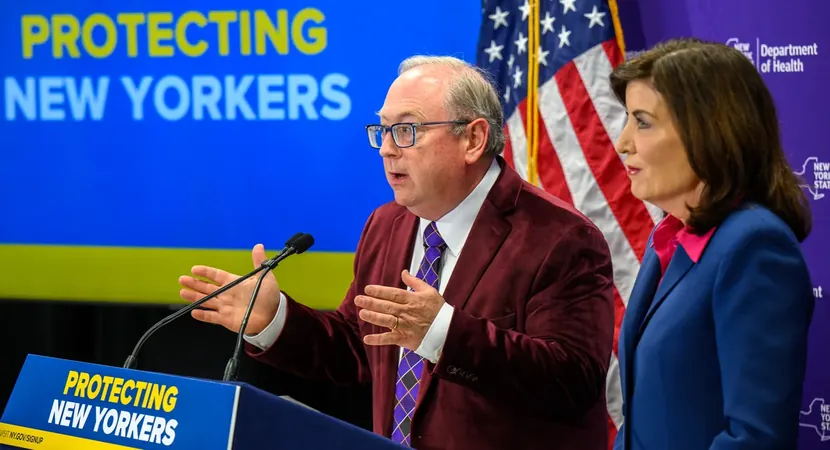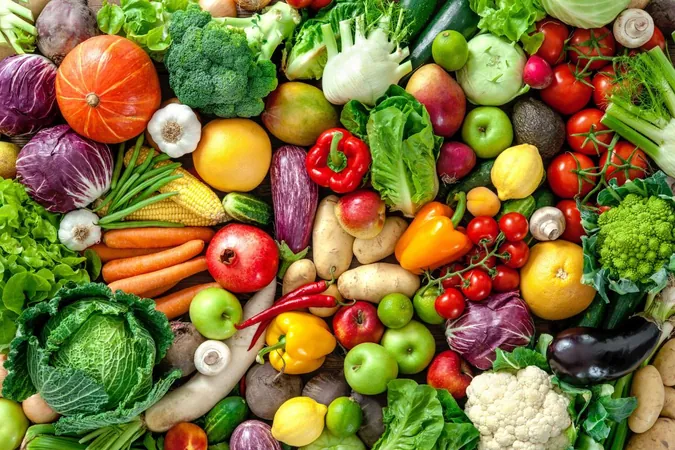
Is Your NYC Neighborhood Vulnerable to Measles? Discover the Shocking Vaccination Rates!
2025-03-25
Author: Wei
Recent data reveals alarming gaps in measles vaccination rates among young children in certain neighborhoods of New York City, particularly in Staten Island and Manhattan’s Hell’s Kitchen. This situation raises concerns for local health officials who are on the frontline of preventing outbreaks amid rising cases across various regions in the United States.
In Staten Island, no ZIP code boasts a vaccination rate above 74% for measles, mumps, and rubella (MMR) among children aged 24 to 35 months. This statistic positions Staten Island as the borough struggling the most with measles protection. To achieve herd immunity—a protective barrier necessary to secure those who cannot be vaccinated or against whom vaccination has failed—a rate of at least 95% is required, according to the state health department.
The harsh reality is evident in the borough's 10309 ZIP code, which includes Rossville and Village Greens, where only 65% of children in that age group have received their first MMR dose. Similarly, three areas in Hell’s Kitchen and Howard Beach in Queens display vaccination rates dipping below 70%. In stark contrast, some neighborhoods like Breezy Point in Queens and areas around JFK Airport have sky-high vaccination rates at 99%.
Overall, New York City registers approximately 81% vaccination coverage among children aged 24 to 35 months, with rates ranging from a troubling 65% to a commendable 99% across different ZIP codes. Governor Kathy Hochul recently expressed concerns over the situation, highlighting New York’s fourth confirmed measles case of the year and urging local leaders and community figures to advocate for vaccinations amidst the growing threat of the virus.
Dr. Adam Ratner, the Pediatric Infectious Diseases director at NYU Langone’s Hassenfeld Children's Hospital, emphasized that tackling vaccination rates requires community-specific strategies. Each neighborhood's unique challenges necessitate tailored approaches for effective outreach and education.
Previous vaccine mandates during the 2018-2019 outbreak still resonate, as York City’s Williamsburg neighborhood recently saw vaccination rates hover between 70% to 76% in certain areas. Addressing vaccine hesitancy remains critical, especially in communities where misconceptions about vaccine safety and safety concerns prevail. Dr. Anna Cornish from Staten Island University Medical Center noted that misinformation about vaccines leading to conditions like autism often influences parental decisions.
Education efforts in schools and community centers are crucial, as evidenced by Dr. Cornish's proactive approach in discussing the severe risks of measles with families who mistakenly believe natural immunity is preferable. Uninformed choices could have dire consequences, leading to complications, hospitalizations, or worse.
As of 2023, New York has recorded four distinctive measles cases, with public health officials on high alert, closely monitoring any signs of community transmission. Vaccination coverage is paramount in mitigating outbreak risks, supplemented by various factors including population density and public health responses.
Presently, states like Texas and New Mexico, as well as parts of Canada such as Ontario and Quebec, are grappling with measles outbreaks, illustrating the importance of vaccination as a public health priority. Will your neighborhood be the next to face the consequences of low vaccination rates? It's time to take action!





 Brasil (PT)
Brasil (PT)
 Canada (EN)
Canada (EN)
 Chile (ES)
Chile (ES)
 Česko (CS)
Česko (CS)
 대한민국 (KO)
대한민국 (KO)
 España (ES)
España (ES)
 France (FR)
France (FR)
 Hong Kong (EN)
Hong Kong (EN)
 Italia (IT)
Italia (IT)
 日本 (JA)
日本 (JA)
 Magyarország (HU)
Magyarország (HU)
 Norge (NO)
Norge (NO)
 Polska (PL)
Polska (PL)
 Schweiz (DE)
Schweiz (DE)
 Singapore (EN)
Singapore (EN)
 Sverige (SV)
Sverige (SV)
 Suomi (FI)
Suomi (FI)
 Türkiye (TR)
Türkiye (TR)
 الإمارات العربية المتحدة (AR)
الإمارات العربية المتحدة (AR)